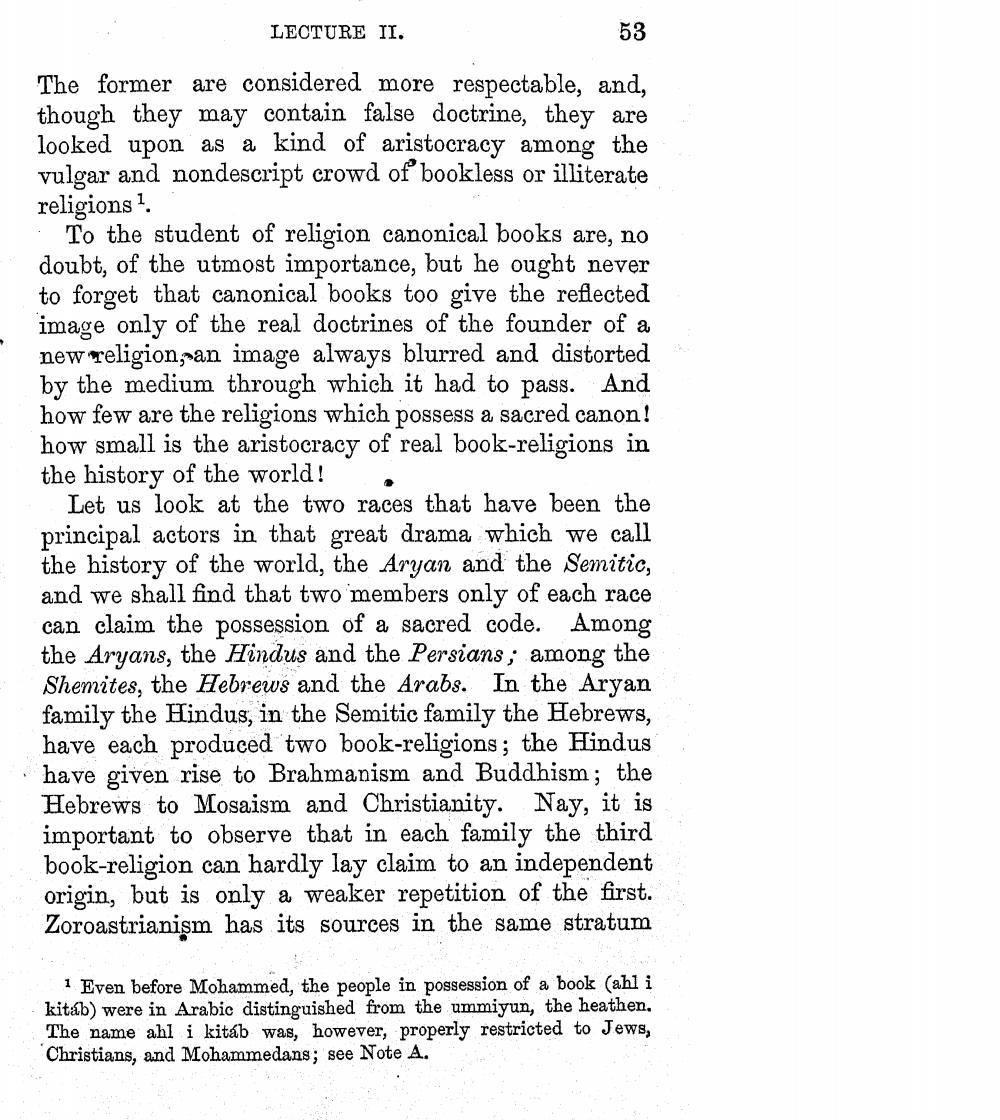________________
53
The former are considered more respectable, and, though they may contain false doctrine, they are looked upon as a kind of aristocracy among the vulgar and nondescript crowd of bookless or illiterate religions 1.
To the student of religion canonical books are, no doubt, of the utmost importance, but he ought never to forget that canonical books too give the reflected image only of the real doctrines of the founder of a new religion, an image always blurred and distorted by the medium through which it had to pass. And how few are the religions which possess a sacred canon! how small is the aristocracy of real book-religions in the history of the world!
LECTURE II.
Let us look at the two races that have been the principal actors in that great drama which we call the history of the world, the Aryan and the Semitic, and we shall find that two members only of each race can claim the possession of a sacred code. Among the Aryans, the Hindus and the Persians; among the Shemites, the Hebrews and the Arabs. In the Aryan family the Hindus, in the Semitic family the Hebrews, have each produced two book-religions; the Hindus have given rise to Brahmanism and Buddhism; the Hebrews to Mosaism and Christianity. Nay, it is important to observe that in each family the third book-religion can hardly lay claim to an independent origin, but is only a weaker repetition of the first. Zoroastrianism has its sources in the same stratum
1 Even before Mohammed, the people in possession of a book (ahl i kitab) were in Arabic distinguished from the ummiyun, the heathen. The name ahl i kitáb was, however, properly restricted to Jews, Christians, and Mohammedans; see Note A.




